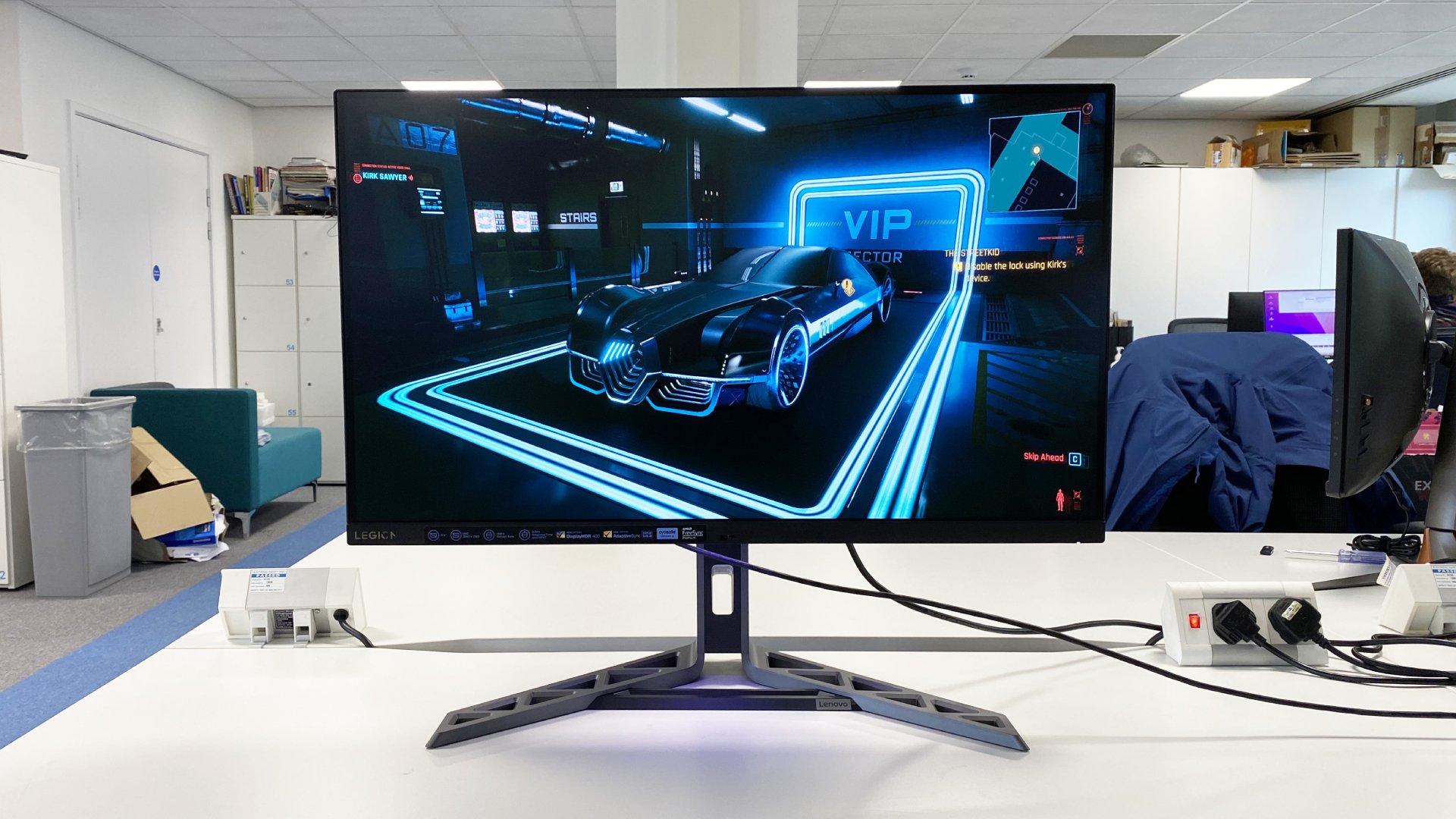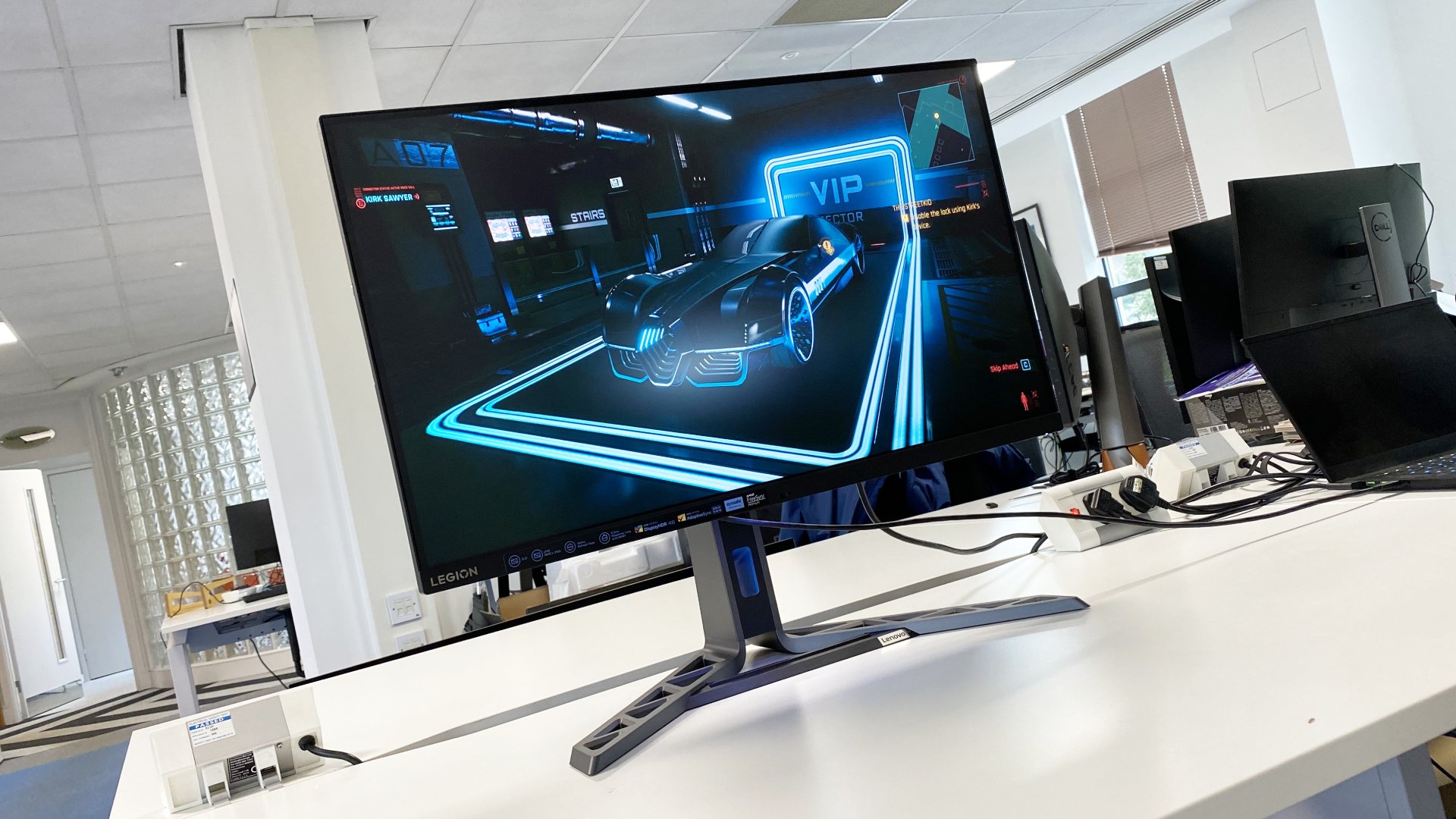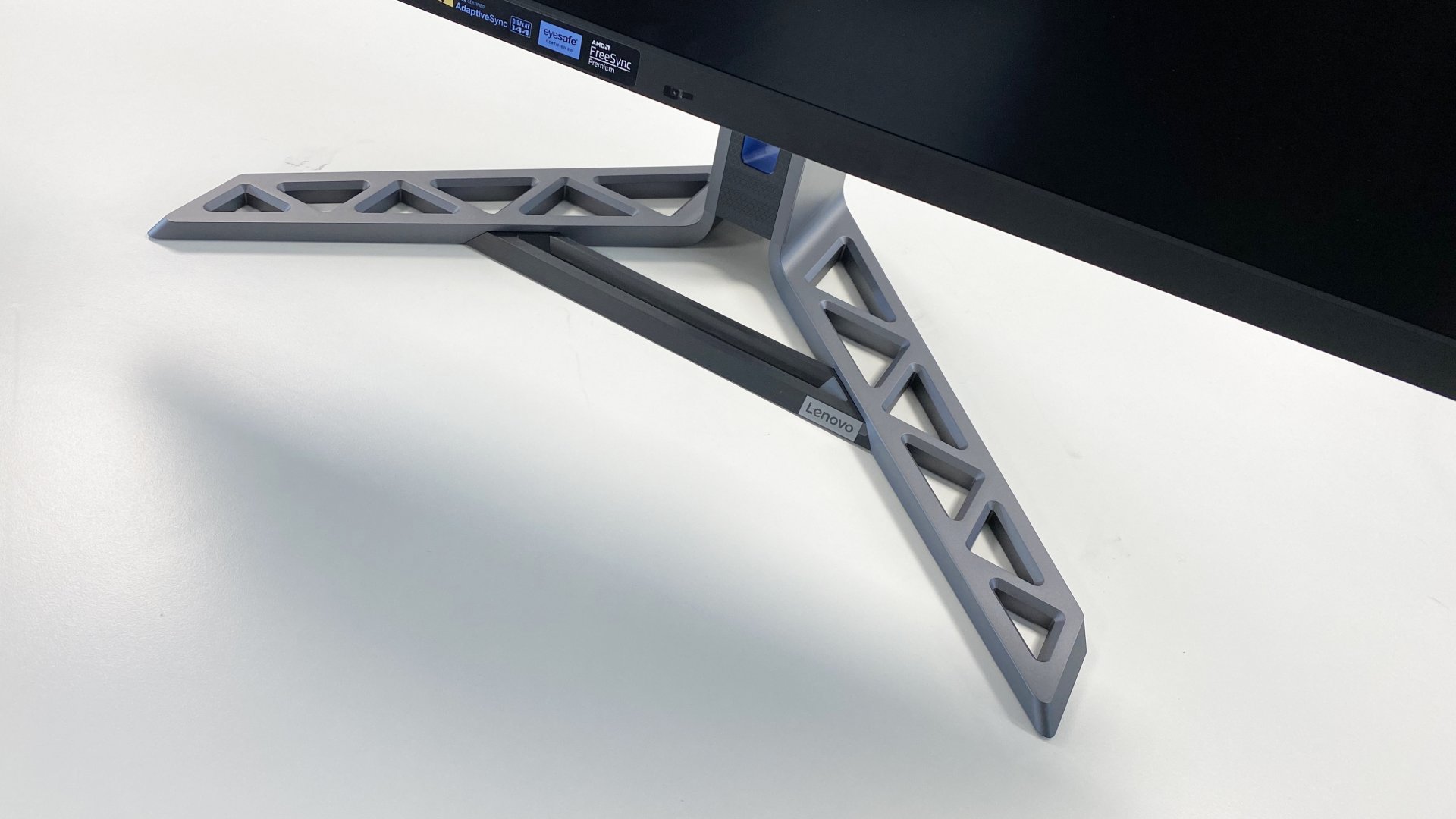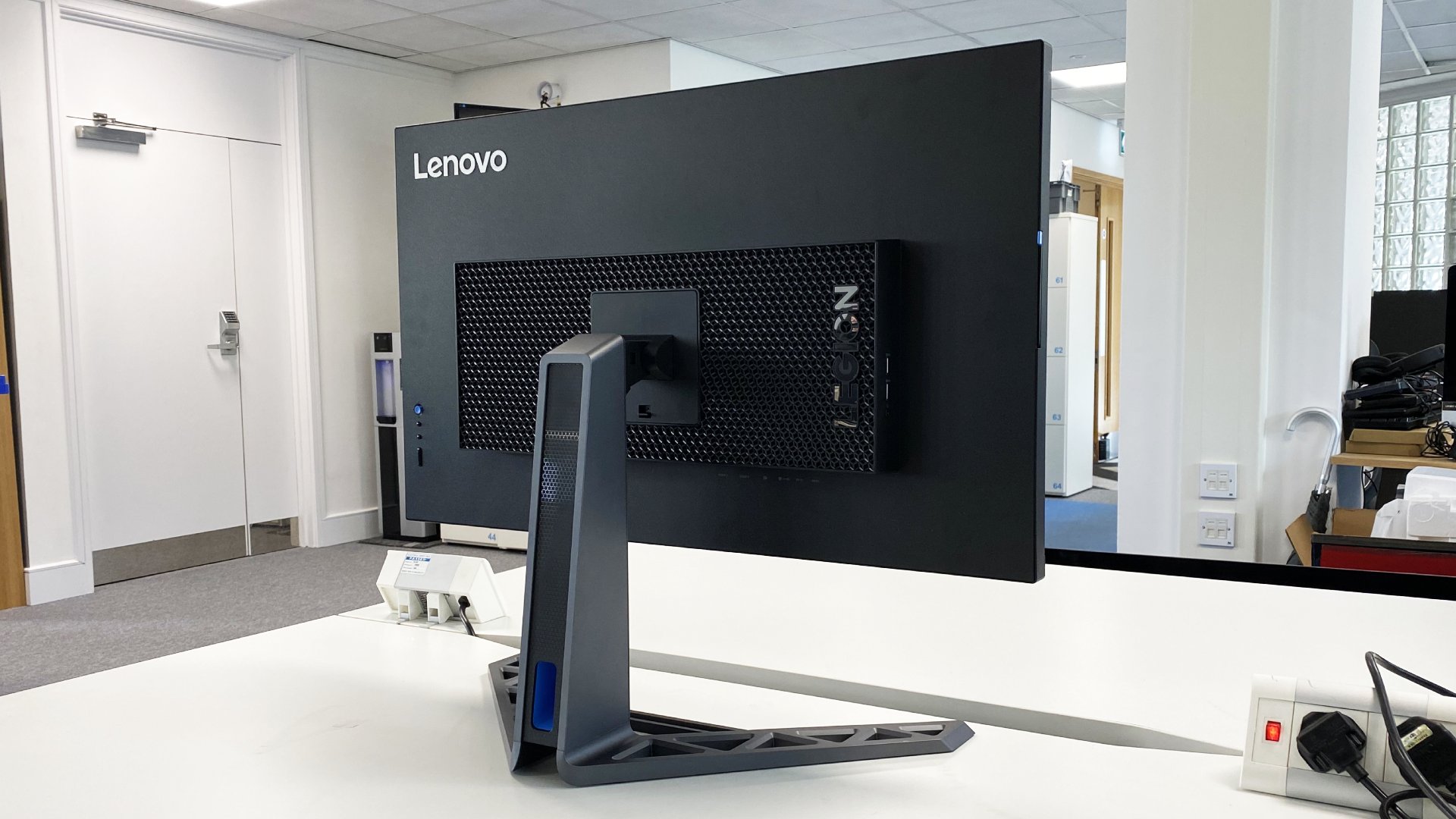[ad_1]
All of the pixels and loads of refresh, that is the brand new Lenovo Legion Y32p-30. It is a 32-inch gaming monitor with full 4K decision, 0.2ms claimed response, IPS panel tech, and 144Hz refresh. That is a really specific mixture of capabilities and guarantees a high-DPI gaming expertise that, by a minimum of some measures, even the very best OLED gaming panels cannot match.
The truth that you possibly can have one thing like a 48-inch 120Hz OLED panel for near the Legion Y32p-30’s $750 sticker worth would not make for a cushty comparability.
Oh, yeah. OLED panel tech. That is the issue proper now for any premium priced LCD gaming monitor, is not it? The truth that you possibly can have one thing like a 48-inch 120Hz OLED panel just like the Gigabyte Aorus FO48U (opens in new tab) for near the Legion Y32p-30’s $750 sticker worth would not make for a cushty comparability. You can even select from zillions of equally specified 32-inch 4K gaming screens, a few of that are considerably cheaper. So, yeah, Lenovo’s newest gaming panel has its work reduce out, after which some.
Past the headline specs of panel kind, decision and refresh fee, a number of issues stand out. The primary is the claimed 0.2ms response time. From an IPS panel? Actually?
The reason is that the 0.2ms score is courtesy of the MPRT (Movement Image Response Time) measure, which is all the time slightly deceptive. Fortunately, Lenovo truly additionally will get much more granular than most monitor producers, breaking down the extra consultant grey-to-grey response by advantage of its overdrive settings.
Lenovo Legion Y32p-30 specs

Display dimension: 32-inch
Decision: 3840 x 2160
Brightness: 350 nits, 400 nits peak
Response time: 0.2ms MPRT
Refresh fee: 144Hz
Viewing angle: 178° H&V
Distinction ratio: 1000:1
Options: IPS panel, 90% DCI-P3, Freesync Premium, 1x DisplayPort 1.4, 2x HDMI 2.1, USB-C, KVM swap
Value: $749 (opens in new tab) | £799 (opens in new tab)
With overdrive off, Lenovo quotes 7ms, whereas degree one overdrive is 5ms, degree two 4ms, degree three 3ms and degree 4 2ms. Attention-grabbing, however maintain these ideas.
It is also not possible to disregard the truth that this is not a correct HDR monitor. It is obtained the same old DisplayHDR 400 certification and native dimming. However it runs simply 16 edge-lit zones, which merely doesn’t allow the form of lighting management required to ship a real HDR expertise from an LCD panel. You want a Mini LED backlight with tons of or hundreds of zones for that.
Is {that a} large deal? It relies upon. It actually means this monitor is brief on a minimum of one crucial functionality in comparison with the brand new era of OLED screens and their wonderful HDR efficiency, together with the wonderful Alienware 34 AW3423DW (opens in new tab) and Philips Evnia 34M2C8600 (opens in new tab) .
The counterpoint is that, for now a minimum of, you possibly can’t get 4K on this dimension of panel with its candy 140DPI pixel density from any OLED gaming display. That is your selection on the excessive finish, at the moment. Would you like the velocity and excellent HDR efficiency of OLED? Or is it mega pixel density and razor sharp in-game picture high quality you actually need, by which case it needs to be some form of LCD monitor.

Anyway, elsewhere the Lenovo Legion Y32p-30 offers you loads of connectivity choices together with DisplayPort 1.4, two HDMI 2.1 sockets and even USB-C with energy supply. That can can help you join and cost a laptop computer, albeit the 75W restrict will not get the job finished for a correct gaming moveable.
Critically, all of these inputs assist the panel’s full 144Hz refresh. There’s additionally a two-port USB-A hub, a KVM swap, which is useful in case you’re planning on greater than gaming, and a few token RGB lighting on the underside of the show.
If that latter element is slightly half-hearted, Lenovo has actually put the hours in on engineering and styling. We’re not completely satisfied that the fussy, over-designed monitor base actually works aesthetically, however in typical Lenovo vogue, it is all very top quality and feels extraordinarily sturdy. The stand additionally adjusts for top, tilt and swivel, however not rotating the panel into portrait mode.
Firing the Lenovo Legion Y32p-30 up, first impressions are of a reasonably restrained however very properly calibrated monitor. One slight quirk is that to entry the panel’s full brightness in SDR mode, you need to toggle on “Brightness Native Setting” in OSD for causes that are not fully apparent.
That niggle negotiated, the Lenovo Legion Y32p-30 appears good for its rated 400 nit peak brightness and feels each inch the premium IPS panel that it’s. The colors are beautiful and the excessive DPI-experience reminds you of what you’ve got been lacking with the likes of the aforementioned Alienware OLED and its comparatively pedestrian pixel density. This Lenovo is tight and crispy. That is factor.

It is also correctly fast. That 0.2ms MPRT score is greatest ignored. However taking part in with the overdrive settings reveals a really speedy IPS panel all the identical. There is a contact of overshoot and inverse ghosting within the two quickest of the 4 overdrive modes, however degree two appears incredible. It is tremendous fast with no overshoot.
Is an OLED monitor faster nonetheless? Completely. However more often than not, the distinction is not apparent. This monitor suffers from very, little or no blur. The 144Hz refresh additionally makes for excellent latency.
For certain, in order for you the bottom attainable lag, then 4K and 144Hz is clearly suboptimal—this isn’t an esports monitor—however for many gaming eventualities, the returns diminish fairly quickly above 144Hz. That is very true with the newest and most demanding video games the place, let’s be real looking, you are not going to be hitting a lot above 144 fps on a 1440p panel, not to mention a 4K monitor like this.

Much less spectacular is the Legion Y32p-30’s HDR efficiency. For starters, it would not render SDR content material terribly nicely in HDR mode. The OSD menu provides up quite a few HDR config choices, from HDR400 as default to HDR Gaming, HDR Film, and HDR Picture. However none are terribly nicely calibrated for SDR content material.
The HDR Sport mode specifically does unspeakable issues to SDR colors. However the backside line is that you’re going to must toggle HDR whenever you need to play HDR video games, you possibly can’t simply depart this monitor in HDR mode, even the HDR400 mode borks the SDR colors slightly.
As for precise HDR content material in HDR mode, nicely, we ran the same old suspects in HDR, together with Cyberpunk 2077 and the Final of Us: Half 1. And the Legion Y32p-30 does look slightly bit extra punchy and vibrant than taking part in the identical video games in SDR. However solely slightly.
The HDR Sport mode specifically does unspeakable issues to SDR colors.
Extra to the purpose, what the Lenovo Legion Y32p-30 completely cannot do is compete with OLED panel tech for black ranges and distinction. As IPS screens go, it is undoubtedly aggressive. However like several IPS monitor that does not have a minimum of tons of of dimming zones (and in addition people who do in lots of circumstances), there’s apparent mild bleed in darker gaming scenes and extra usually a barely watery, washed out look in comparison with an OLED monitor. That is simply the fact of LCD expertise.
Talking of realities, then, the Lenovo Legion Y32p-30 is greatest seen as a pleasant, punchy, uber exact SDR monitor, quite than a real HDR panel. That is the place it makes most sense. If you’d like that top pixel density expertise, that super-sharp picture high quality, then there is no substitute for 4K on a “smaller” panel like this versus, say, a 48-inch TV-derived OLED display as a monitor.
This type of 4K panel additionally makes for an important do-everything choice for gaming and in addition getting stuff finished on the Home windows desktop. It is arguably a lot nicer than an OLED monitor with a lot decrease pixel densities for work and shopping the online.
However for pure gaming? That Alienware OLED ultrawide and its much more fascinating shiny Philips doppelganger, with their epic HDR efficiency and outrageous pixel response, are simply so exhausting to beat.
In fact, these screens clock in a minimum of $150 dearer. What’s tougher to justify is the premium over, say, the Gigabyte M32U (opens in new tab) which guarantees just about precisely the identical specs, can at the moment be had for $100 much less and we have seen supplied for sub-$600 every now and then.
It is a tremendous good gaming panel, then, the Lenovo Legion Y32p-30. However it might be that little bit simpler to suggest with $100 or so shaved off the asking worth.
[ad_2]
Source link



